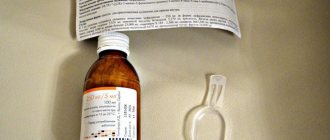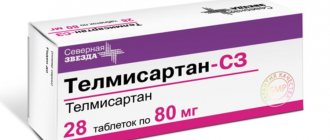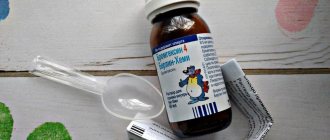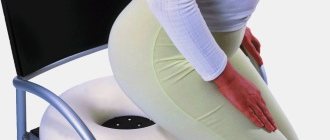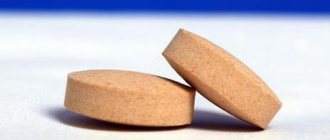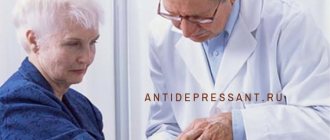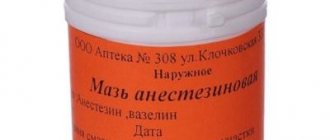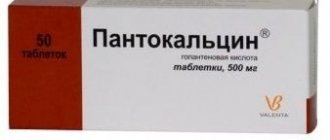The drug Cephalexin belongs to the 1st generation cephalosporins. Available in tablet form and as a suspension for internal use. The active ingredient is cephalexin. The substance has a pronounced antibacterial effect against a number of pathogenic microorganisms. The instructions for use of Cephalexin state that the tablets are prescribed for the treatment of purulent pathologies of the skin and soft tissues, gonorrhea, diseases of the ENT organs, infections of the genitourinary system, respiratory tract and other diseases. Let's consider the features of using the drug, analogues in tablets and injections.
Pharmacodynamics and pharmacokinetics
Pharmacodynamics
The antibiotic Cephalexin is a first generation cephalosporin. It disrupts the synthesis of the cell membrane of microorganisms, which leads to their death. Shows activity against streptococci, Escherichia, Proteus, Klebsiel. Activity against Neisseria gonorrhoeae, Shigella spp., Neisseria meningitidis, Salmonella spp. is lower, therefore it is not used in the clinic for diseases caused by these microorganisms.
Ineffective against Enterococcus faecalis Proteus vulgaris, Morganella morganii, Clostridium spp., Pseudomonas aeruginosa. Methicillin-resistant staphylococci are also not sensitive to it.
Destroyed by beta-lactamases secreted by gram-negative microorganisms.
Pharmacokinetics
When taken orally, it is well absorbed and bioavailability is 90–95%. The maximum concentration in the blood is determined after 1 hour, and the required concentration remains for 4–6 hours. 10–15% binds to blood proteins. It is evenly distributed in many tissues and body fluids: it penetrates poorly through the blood-brain barrier and passes through the placenta. Not metabolized. T1/2 is 0.8–1.2 hours. About 89% is excreted and a small part is excreted in bile. If renal function is impaired, the elimination time is prolonged and the concentration increases.
Impact on the body
It is necessary to understand exactly how this antibiotic affects the human body and what it helps with. The main property is bactericidal. According to radar data, the following are sensitive to the main active ingredient:
- Staphylococci, streptococci, pneumococci.
- Salmonella.
- Escherichia coli.
- Protea.
- Haemophilus influenzae.
- Shigella.
- Klebsiella.
- Treponema.
Important! Resistance to the action of the component is shown by: enterobacteria, tuberculosis microbacteria, enterococci. As a result, Cephaloxin is powerless against them.
The drug is absorbed by 90%, which is a good indicator; good absorption in the gastrointestinal tract is noted.
After administration, the maximum concentration is achieved within 1-2 hours. In this case, there is no concentration in one organ, it is distributed in the bronchi, lungs, liver, heart, kidneys. If treatment is carried out in connection with kidney pathology, there is an increase in the concentration of the drug in the blood. It comes out slower.
Side effects
- rash, urticaria;
- Quincke's edema;
- Stevens-Johnson syndrome;
- abdominal pain;
- decreased appetite;
- dry mouth;
- nausea;
- diarrhea;
- cholestasis;
- increased activity of liver transaminases;
- candidiasis of the intestines and oral cavity;
- colitis;
- dizziness;
- headache;
- hallucinations;
- excitation;
- convulsions;
- interstitial nephritis;
- genital candidiasis;
- itching of the genitals;
- vaginitis;
- arthralgia;
- leukopenia, thrombocytopenia.
Instructions for use of Cephalexin (Method and dosage)
Cephalexin suspension, instructions for use
Children under 10 years of age are recommended to take the suspension orally. 1 ml of the finished suspension contains 50 mg of cephalexin, and 5 ml 250 mg.
Approximate dose for children:
- up to 1 year - 2.5 ml of suspension 3-4 times a day;
- from 1 year to 3 years - 5 ml 3 times;
- from 3 to 6 years - 7.5 ml 3 times;
- from 6 to 10 years - 10 ml 3 times;
- from 10 years to 14 years - 10 ml 3 times.
In each specific case, the dose and frequency of its administration is specified by the doctor depending on the disease and its severity. In some cases (not severe infections of the skin, urinary tract, pharyngitis), the dose is divided into 2 doses, and in severe cases of the disease it is prescribed up to 6 times a day. It is recommended to use the drug for another 2-3 days after clinical improvement.
To prepare the suspension, water is added to the bottle up to the mark on the bottle and shaken. The suspension can be stored at room temperature for 2 weeks. Shake it well before use.
Tablets and capsules are taken orally 30 minutes before meals. The average dose for adults is 250–500 mg every 6 hours, 4 times a day. Thus, the daily dose is 1–2 g (at least), if necessary, it is increased to 4 g, which corresponds to the maximum DM for adults, as well as children over 6 years of age. The course of treatment is from 7 to 14 days.
If renal function is impaired, the maximum DM is 1.5 g, divided into 2–4 doses. During treatment, there may be a false positive urine reaction to glucose. It is not recommended to drink alcohol. This drug does not have injection forms (injections) - only forms for oral use. A representative of the first generation injectable cephalosporins is Cefazolin, the second generation is Cefuroxime, and in the third generation there are much more of them - Cefotaxime, Ceftriaxone, Cefoperazone, Ceftazidime, Cefoperazone/sulbactam.
How to use
How to take Cephalexin suspension for children? To prepare a suspension from the powder, you need to add a little boiled water, cooled to a comfortable temperature, to the bottle. Shake thoroughly. After the granules are completely dissolved, add water exactly to the mark indicated on the wall of the bottle (80 ml) and shake again. The medicine is ready.
Store the suspension at temperatures up to +25 degrees for no more than 2 weeks. Shake the finished product well before taking it . Persons suffering from diabetes should take Cephalexin with caution due to its high sugar content. Children with allergies to artificial flavors and colors may experience dermatitis. The drug often causes drowsiness and dizziness.
What are the first symptoms of rubella in children and what should be the treatment for this disease, find out on our website.
You will find everything about the treatment of chronic pharyngitis in children and a list of recommended medications in this article.
What are the manifestations of chronic obstructive bronchitis in children: the main symptoms of the disease are listed here.
Cephalexin for children
In pediatric practice, the oral route of drug administration is the main route of administration, as it is the least traumatic. For this, there are special children's forms - syrups and suspensions. Among antibiotics, cephalosporins occupy a leading position because they have a wide spectrum of bactericidal action, are well tolerated, are resistant to beta-lactamases, are easy to dosage, and have rare side effects.
Cephalosporins are an alternative to penicillins in the treatment of respiratory tract and ENT infections. The main area of their use in pediatric practice is not severe infections. Thus, Cephalexin for children is used for tonsillitis, sinusitis, otitis, cervical lymphadenitis, streptococcal or staphylococcal skin infections. It has been noted that penicillins, which are used to treat angina, are not as effective as cephalosporins, which cause eradication of group A β-hemolytic streptococcus and effective recovery of the child.
Cephalosporins remain in the tissues of the tonsils in bactericidal concentrations, while the concentration of penicillin decreases rapidly. Sinusitis is a common complication of ARVI and occurs in 10% of sick children. For bacterial sinusitis, antibiotics (in this case, cephalosporins are more effective) are a mandatory component of therapy. The suspension can be prescribed to children from birth, but with extreme caution during the first 6 months. The recommended doses are given above, but the doctor, based on the situation, adjusts the dose.
Contraindications
Among other antimicrobial agents, cephalexin has a small list of contraindications. In only a few groups of patients, the use of the drug increases the risk of developing serious complications. The main limitation to taking an antibiotic is considered to be immunological intolerance to the substances contained in the capsule, tablet or powder form. It is necessary to take into account sensitivity not only to a specific drug component, but also to other beta-lactam antibiotics.
Use with caution if the following conditions are present::
- Impaired kidney function.
- The patient is up to one year old.
- Carrying a child.
- Breastfeeding period.
- Previously diagnosed pseudomembranous colitis.
The capsule form is not suitable for patients under three years of age.
Reviews of Cephalexin
What are Cephalexin tablets for? Since it has antistaphylococcal and antistreptococcal activity, indications for use determine its use for pyelonephritis, cystitis, pneumonia, otitis, pleural empyema, sinusitis, and skin infections.
This is evidenced by patient reviews:
- “... I treat a sore throat with Cephalexin, it has been severe since childhood at high temperatures”;
- “... I give it to my husband, he often gets otitis media. The only side effect he notes is drowsiness. Does not cause dyspepsia”;
- “... My sinusitis is treated perfectly with it. From the second day I feel relief.”
In reviews of the drug, it is often used for urinary tract infections that do not respond to standard treatment, for example, for recurrent cystitis. It was prescribed to patients in the hospital, after cystoscopies or the use of a catheter, if the patient had diabetes mellitus.
Judging by the reviews, Cephalexin suspension was prescribed to children most often for otitis media, tonsillitis, and suspected pneumonia. The suspension has a pleasant fruity smell and does not cause negative emotions in children. Reviews for children are often positive. Mothers note rapid recovery and good tolerability of the drug. Here are some reviews about Cephalexin suspension:
- “... My daughter had a sore throat. The doctor prescribed cephalexin + hilak. Things are getting better";
- “... The child had a cough and otitis media. This drug cleared up the fever literally in a day, and after five days we were already healthy”;
- “... My daughter drank it without scandals. She had a sore throat and ear, and had a very high temperature. A day later the condition improved”;
- “... I have an asthmatic child and Cephalexin is our only antibiotic for colds and sore throats. It helps a lot. The suspension is easy to prepare. He drinks it with pleasure, without even washing it down with anything.”
In some cases, stool disturbances were noted, which is associated with the effect of the antibiotic on the intestinal microflora, and nausea.
Indications for use
The antibiotic has almost no side effects and is well tolerated. Therefore, it can be prescribed to newborns from the first month of life.
Cephalexin is highly effective in the treatment of respiratory tract inflammation. Indications:
- pharyngitis;
- emphysema;
- lung abscess;
- bronchitis (including obstructive);
- tonsillitis;
- pneumonia;
- tracheitis.
Often used in the treatment of bacterial diseases of the genitourinary system:
- cystitis;
- endometritis;
- urethritis;
- pyelonephritis, etc.
Helps quickly get rid of purulent inflammation of the skin (carbuncles, furunculosis, streptoderma), enlarged lymph nodes, inflammatory processes in the joints (poliomyelitis, polyarthritis).
Often prescribed for diseases of the ENT organs:
- sinusitis;
- ethmoiditis;
- sinusitis;
- otitis;
- angina;
- frontitis.
It is used during the postoperative recovery period to prevent possible complications.
On the website you can read the instructions for using Pertussin syrup for children.
You can find out when Ambroxol cough syrup is prescribed to children in this publication.
The correct dosage of Biseptol antimicrobial syrup for children is indicated here.
Cephalexin price, where to buy
You can purchase this drug at any pharmacy. Its cost depends on the manufacturer and form of release. The price of Cephalexin tablets is currently unknown, since this dosage form of the drug is not available in the pharmacy chain. Capsules 500 mg No. 16 can be purchased for 76-80 rubles.
Suspension for children is a more convenient form of release for this age category. The price of Cephalexin suspension ranges from 64-75 rubles.
